|
Chorale Melodies used in Bach's Vocal Works
Also hat Gott die Welt geliebt |
|
Melody & Text | Use of the CM by Bach | Use of the CM by other composers |
| |
|
Melody & Text: |
|
The words and melody of the opening movement are those of the Hymn, “Also hat Gott die Welt geliebt.” (God so loved the world). Its author, Salomo Liscow or Liscovius, was born at Niemitsch, near Guben, in 1640. After graduating at Wittenberg, where he was crowned a poet, he was ordained pastor at Otterwisch in 1664, and in 1685 was appointed to a similar position at Wurzen. He died there in 1689. The Hymn was first published in his Christlichen Frauen-Zimmers geistliche Tugend-Spiege (Leipzig, 1675).
The melody was composed by Gottfried Vopelius and was attached to the Hymn in his Neu Leipziger Gesangbuch (Leipzig, 1682 [1681]).
J.S. Bach has not used the melody elsewhere. It is given neither by Erk nor the Choralgesange.
The words of the opening movement are the first stanza of the Hymn.
Source: Charles Sanford Terry: Johann Sebastian Bach, Bach’s Chorals, vol. 2 The Hymns and Hymn Melodies of the Cantatas and Motetts [1917], pp 262-263 |
|
Melody: Zahn 5920
Composer: Gottfried Vopelius (1682) |
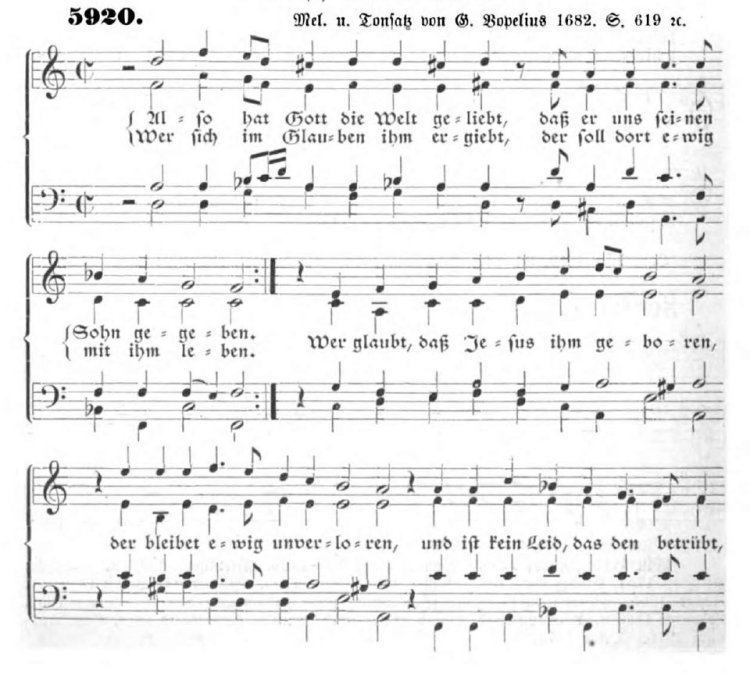
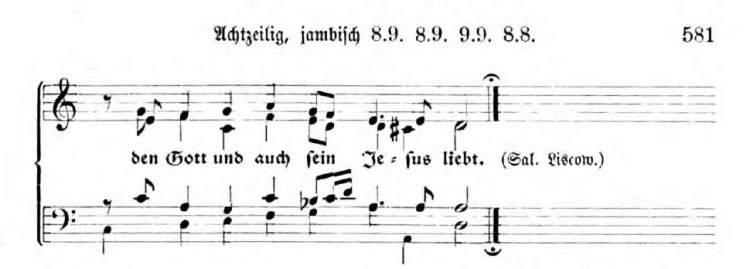 |
|
Text: Also hat Gott die Welt geliebt (NLGB 233; EG 28)
Author: Salomo Liscow (1675) |
|
Hymnal versions Bach may have known: |
|
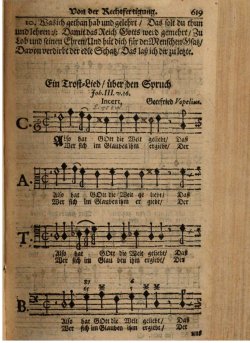
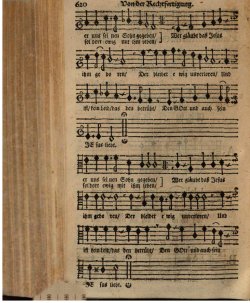
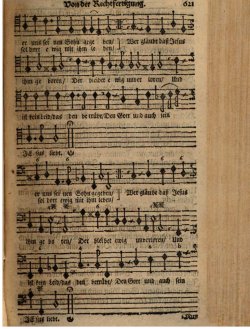
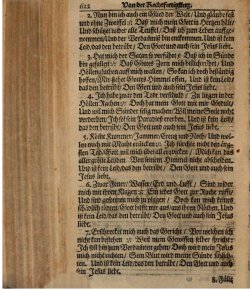
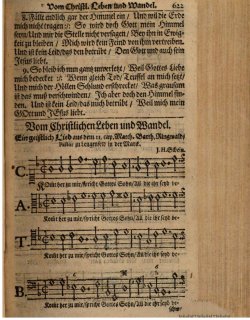
|
|
Melody & text of Also hat Gott die Welt geliebt (NLG 233) from the Neu Leipziger Gesangbuch (1682), pp 619-622 |
| |
| |
|
Use of the Chorale Melody by Bach: |
|
Text: Also hat Gott die Welt geliebt |
|
Chorus Also hat Gott die Welt geliebt (Mvt. 1) from Cantata BWV 68 |
|
Chorale Chorus (Larghetto) in three parts with brief instrumental prelude & ritornelli between lines, homophonic to imitation (E. “Wir glaubet”), homophonic (H. “Den Got”) (text paraphrase John 3:16) [SATB; Corno (canto) col Soprano, Oboe I e Violino I all' unisono, Oboe II e Violino II all' unisono, Taille e Viola all' unisono, Continuo]: “Also hat Gott die Welt geliebt, / Dass er uns seinen Sohn gegeben. / Wer sich im Glauben ihm ergibt, / Der soll dort ewig bei ihm leben. / Wer glaubt, dass Jesus ihm geboren, / Der bleibet ewig unverloren, / Und ist kein Leid, das den betrübt, / Den Gott und auch sein Jesus liebt.” (God so loved the world / that he gave his son to us. / Who gives himself to him in faith / will live there [in heaven] with him for ever. / Who believes that Jesus has been born for him / is never abandoned, / and there is no sorrow that troubles the person / who is loved by God and his Jesus also.); d minor; 12/8 siciliano style.
Source: Cantata BWV 68 - Discussions Part 5 (William L. Hoffman, May 28, 2017) |
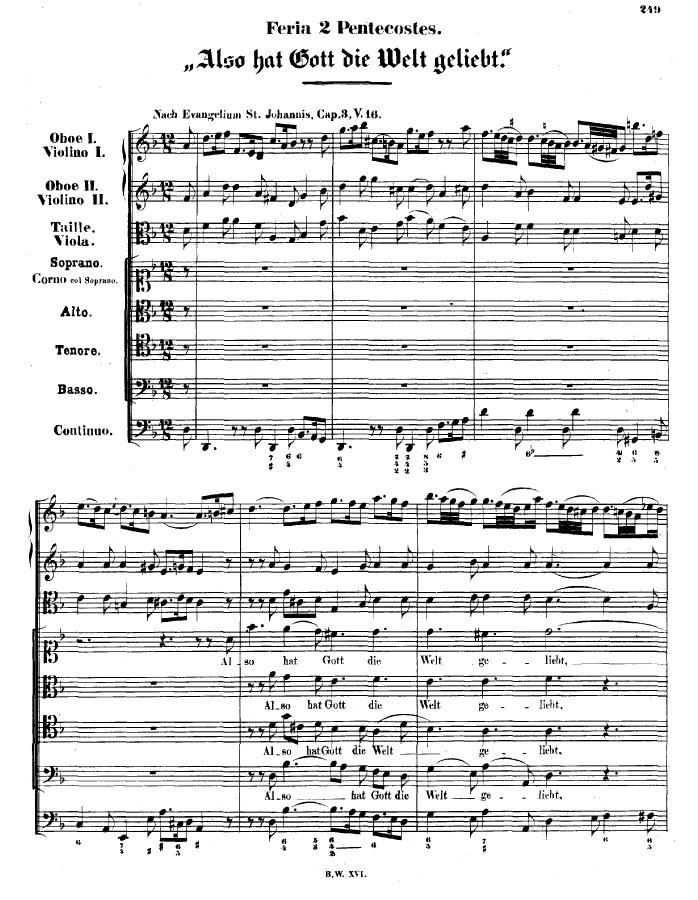 |
| |
| |
|
Use of the Chorale Melody by other composers: |
| |
| |
|
Sources: Bach Digital; BGA; Zahn
Photos from Gottfried Vopelius Neu Leipziger Gesangbuch (Vopelius 1682), were taken from a digital copy of the book downloaded from Bayerische Staatsbibliothek München. This copy is Out of copyright - non commercial re-use (Europeana Rights).
Prepared by Aryeh Oron (October 2018) |